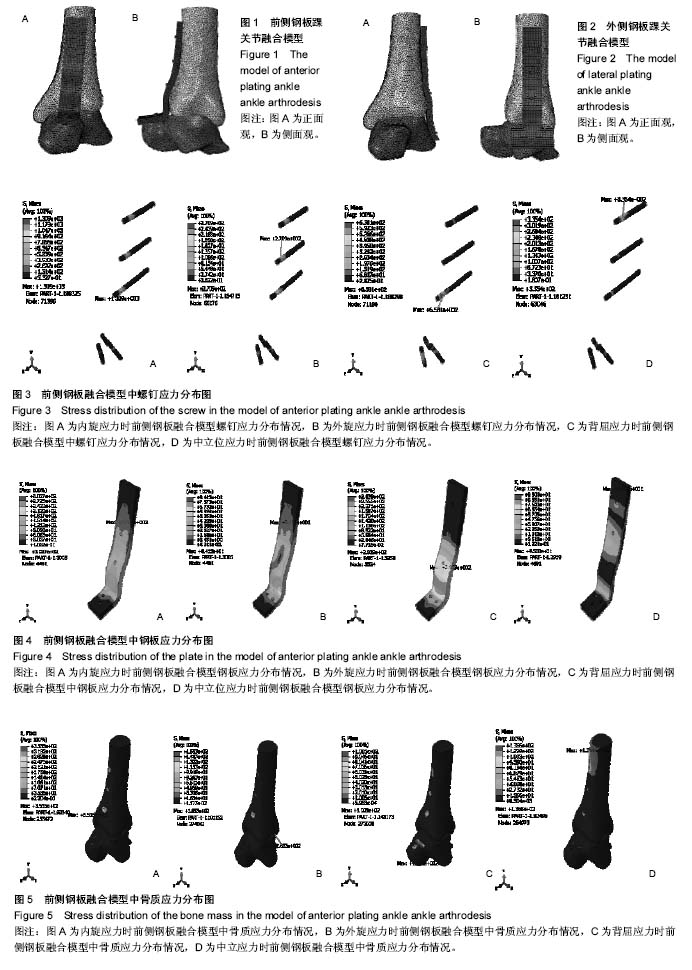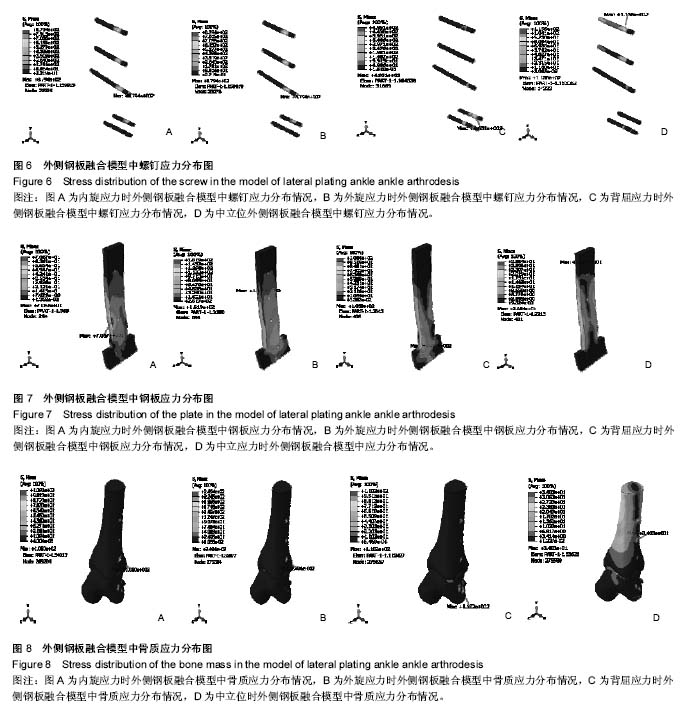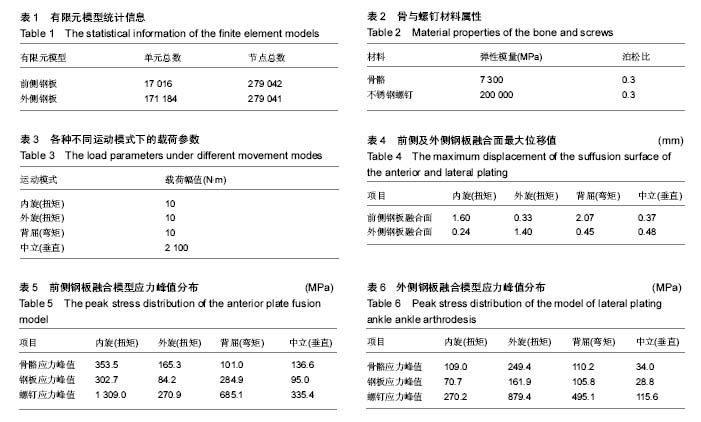| [1] 施忠民,张驰,顾文奇,等.经外踝截骨锁定钢板内固定行踝关节融合[J].中国修复重建外科杂志,2011,25(7):781-784.[2] Colman AB, Pomeroy GC. Transfibular ankle arthrodesis with rigid internal fixation: an assessment of outcome. Foot Ankle Int. 2007;28(3): 303-307. [3] Nickisch F, Avilucea FR, Beals T, et al. Open posterior approach for tibiotalar arthrodesis. Foot Ankle Clin. 2011; 16(1):103-114. [4] Torudom Y. The results of ankle arthrodesis with screws for end stage ankle arthrosis. J Med Assoc Thai. 2010;93 Suppl 2: S50-54. [5] Clare MP, Sanders RW. The anatomic compression arthrodesis technique with anterior plate augmentation for ankle arthrodesis. Foot Ankle Clin. 2011;16(1): 91-101. [6] Yasui Y, Takao M, Miyamoto W, et al. Technique tip: open ankle athrodesis using locking compression plate combined with anterior sliding bone graft. Foot Ankle Int. 2010;31(12): 1125-1128.[7] Gessmann J, Ozokyay L, Fehmer T, et al. Arthrodesis of the infected ankle joint: results with the Ilizarov External Fixator. Z Orthop Unfall. 2011;149(2): 212-218.[8] Zwipp H, Rammelt S, Endres T, et al. High union rates and function scores at midterm follow-up with ankle arthrodesis using a four screw technique. Clin Orthop Relat Res.2010; 468(4): 958-968.[9] Glenn D, John K. Tibiotal ararthrodesis using acustom blade plate. J Trauma. 2007;63:1279-1282.[10] Ahmad J,Pour AE,Raikin SM. The modified use of a proximal humeral Locking plate for tibiotalocalcaneal arthrodesis.Foot Ankle Int. 2007;9:977-983.[11] Tarkin IS, Mormino MA, Clare MP. Anterior plate supplementation increases ankle arthrodesis construct rigidity. Foot AnkleInt. 2007;2:219-223.[12] Kakarala G, Rajan DT. Comparative study of ankle arthrodesis using Cross screw fixation versus anterior contoured plate plus cross screw fixation. Acta Orthop Belg. 2006;6:716-721.[13] Alonso VA, Lauge PH, Lidgren L, et al. Initial stability of ankle arthrodesis with three-screw fixation. A finite element analysis. Clin Biomech(Bristol,Avon). 2004;7: 751-759.[14] ThordarsonDB,Markolf K,Cracchiolo AR. Stability of an ankle arthrodesis fixed by cancellous-bone screws compared with that fixed by an external fixator. A biomechanical study. J Bone Joint Surg Am. 1992;7: 1050-1055.[15] 桂忠山,徐晓峰,李桓毅. 无头加压螺钉和锁定加压钢板在踝关节融合固定中的对比[J].中国组织工程研究,2016,20(31): 4623-4629.[16] 卢昌怀,余斌,陈辉强,等. 正常步态下距骨三维有限元模型的建立及应力分析[J]. 南方医科大学学报,2010,10: 2273-2276.[17] 杨成伟,李全,孙伟,等.内收型股骨颈骨折多根空心螺钉固定的三维有限元分析[J].中国矫形外科杂志,2009,17(14):1077-1080.[18] Thordarson DB,Markolf K,Cracchiolo AR. Stability of an ankle arthrodesis fixed by cancellous-bone screws compared with that fixed by anexternal fixator. Abiomechanical study. J Bone Joint Surg Am. 1992;7: 1050-1055.[19] Huiskes R, Chao EY. A survey of fininte element analysis in orthopaedic biomechanics:the first decade. J Biomechanics. 1983;16(6):365-400.[20] Spyrou LA, Aravas N. Muscle-driven fininte element simulation of human foot movements. Comput Methods Biomech Biomed Engin. 2011;29(7):267-271.[21] Albert E. Zur resection des kniegelenkes. Wien Med Press, 1879.[22] TarkinI S,Mormino MA,Clare MP,et al .Anterior plates upple mentation increases ankle arthrodesi construct rigidity. Foot Ankle Int. 2007;28(2):219-223.[23] Gharehdaghi M,Rahimi H,Mousavian A.Anterior ankle arthrodesis with molde dplate:technique and outcomes.Arch Bone Jt Surg. 2014;2(3):203-209.[24] Clifford C,Berg S,McCann K,et al. A biomechanical comparison of internal fixation techniques for ankle arthrodesis. J Foot Ankle Surg. 2015;54(2):188-191. |
.jpg)



.jpg)